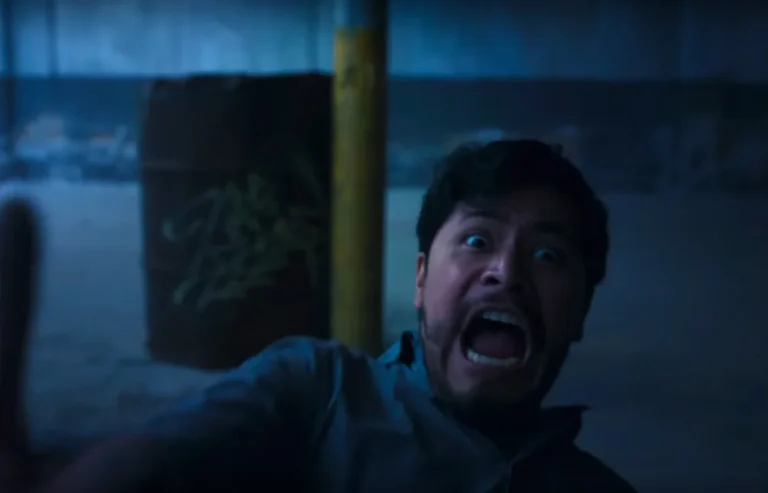In an otherwise pristine filmography, The Black Cauldron (1985) remains to this day infamously known as “the film that almost killed Disney.” Production began just a few years after the departure of iconic founder Walt Disney. The target behind the idea was to craft the “new generation’s Snow White,” a film that was poised to, once again, change the history of animation forever. Instead, it turned out to be the biggest flop ever recorded by the studio’s coffers, raking in less than half of what was spent to make it.
Repudiated by its own creators, loathed by families, and trashed by critics, The Black Cauldron, were it not for its catastrophic years of gestation, had nonetheless the potential to be the revolutionary masterpiece so hoped for. To this day, it remains one of the most ambitious, rebellious, and experimental features ever produced by the American studio, and it is primarily the internal difficulties that led to what could have been a Gothic masterpiece to be instead a little Frankenstein’s monster.
Indeed, from the economic point of view, it does make sense to remember the film as a colossal failure; from the artistic point of view (despite the apparent problems), the negative fame and reputation of the picture seem unfair. Not only that, The Black Cauldron could also be labeled not as the movie that marked the lowest point of the cinematographic house but as the film that opened its resurgence, albeit in a completely different fashion than what was expected. It is, therefore, interesting to retrace not only the history but also the revolutionary role that The Black Cauldron played in the way Western animation is designed and conceived today. But above all, it is dutiful to revisit what could have been if only Disney’s top management had been more enlightened.
The History Of The Project
The picture’s pre-production began in 1973, two years after the first optioning of the rights to the fantasy saga The Chronicles of Prydain by American writer Lloyd Alexander. As noted above, Disney’s dream was to craft the “Snow White of the new generation,” an extremely ambitious project capable of riding the strong appeal of fantasy in the 1970s. However, due to Walt Disney’s recent departure in 1966, the studio was shaken by deep uncertainties and internal revolutions. Such underlying tensions caused the long and disastrous gestation of The Black Cauldron. Indeed, without Walt as a creative light, the conviction to focus decisively on animated films began to wane, causing them to be released less and less consistently and with mixed results.
Under the direction of Ron Miller, Walt Disney’s son-in-law, The Black Cauldron was to become the baptism of a younger generation of Disney artists as opposed to the old guard. The young artists were convinced that pushing toward more adult storytelling, more experimental animation, and embracing the horror dimension of Disney’s poetics (hitherto only hinted at) were the solutions to lift the studio out of its uncertain atmosphere. The juxtaposition between the desire to stick to traditional Disney canons and the willingness to test its limits has, in fact, indelibly marked the entire project from its earliest stages in a vicious cycle of creative differences, revisions, tweaks, and delays.
The episode of how the legendary animator Don Bluth, due to frustration over the project’s progress and the continuous production delays, left Disney, taking 13 colleagues with him, to found his own studio (Don Bluth Entertainment), is quite well known. Left to work on the project were some members of the old guard and some never-tested youngsters, including John Lasseter and Tim Burton. A 10-week animators’ strike in 1982 made the situation even more distressing. In the final stages, the situation was so dire that “anyone who could hold a paintbrush” was recruited into the drifting picture.
Not only that, during what has been labeled as the “corporate upheaval” of 1984, Michael Eisner assumed the role of President in place of Miller, Jeffrey Katzenberg was the new Studio Chairman, and Roy Disney (Walt’s grandson) as head of the animation department. With neither Eisner nor Katzenberg particularly fond of animation, the possibility of eliminating the division was discussed.
Katzenberg was determined to attract not new audiences but the usual audience of children under the age of 10 and to avoid the R-rating (banned for unaccompanied minors under 17). He considered the film to be overly graphic and ordered scenes deemed excessive to be cut. This is despite how cutting an animated product is much more complex than making changes to a live-action product, as in animation, there are no outtakes. Famously, Katzenberg himself, ignoring the opposition of producer Joe Hale, rushed into the editing room to personally cut sections of footage.
The result was a series of abrupt shots, clearly recognizable in the final output, and a set of hastily written and animated scenes to fill in the holes. Twelve to fifteen minutes of film were eliminated, and the release was postponed for six months, from Christmas 1984 to mid-1985. And despite the cuts, The Black Cauldron was still the first Disney animated feature to be PG-rated.
With direction by Ted Berman and Richard Rich and one of the first animator jobs for Andreas Deja, The Black Cauldron was finally released in the United States on July 24, 1985, by Walt Disney Pictures and Buena Vista. The picture was a resounding failure at the U.S. box office, grossing just $22 million against a cost of $44 million. The Black Cauldron’s flop marked the end of the old way of making animated films for the studio, and Disney moved the animation department from its offices in Burbank, California, to a warehouse in Glendale and decided to concentrate on producing titles with faster and cheaper processing.
A still from The Black Cauldron (1985)
The film was no longer screened in theaters or on television, and no home video version was released. The VHS was published in very few copies, only in 1998, a full 13 years after the first theatrical release. Princess Eilonwy, as well, is still the only Disney princess to have never been included in the official Disney lineup.
The Movie
In the legendary Land of Prydain, poor in resources and scarred by a long war, lives young Taran, a pig-keeper assistant who dreams of becoming a great warrior. Taran’s hero’s journey begins as the wise Dallben instructs him to hide the little pig Ewy, an oracle, from the Lich sorcerer known as the Horned King. The king is indeed searching for a magical being capable of tracking down the titular Black Cauldron. Notably, the cauldron is an object that would allow the king to awaken his army of the dead, an heirloom therefore endowed with necromantic abilities. The theme of necromancy, encountered in the film’s first few minutes, is itself atypical in the then-Disney filmography.
The picture does indeed display the grim and gloomy tone that had so worried the management, and which, in fact, was not erased but only alleviated by the extensive revisions and cuts. The lack of continuity in the animations, the abrupt cuts, the rushed script, the obvious holes in the narrative, and the deleted interactions all contribute to making The Black Cauldron a wacky collage, incoherent to follow, and alienating to watch. On top of this is the desire to condense the story of a five-book saga into barely a feature-length film.
Omitting the already family-unfriendly necromancy, The Black Cauldron is peppered with potentially disturbing themes for a child audience in a patchwork of mostly grotesque or just plain weird characters. Taran himself is a dreamy and absent-minded little boy who dreams of becoming an admired warrior without fully understanding the reality of war. Prominent among the other characters is Gurgi, a small hybrid who lives in the woods, a proto-Gollum who decides to sacrifice himself (in what is, in effect, a suicide) not only for the good of all but also because he feels lonely, unworthy, and unloved.
The villain, the Horned King, lives in a castle full of carcasses and skeletons, and his minions are violent and abject, devoted to women and violence. This is complemented by Creeper’s self-harm and a set of not particularly veiled sexual references. Once resurrected, the army of the dead is explicitly shown slaughtering the army of humans to augment its ranks. At the same time, the king, once defeated, is engulfed by the cauldron and liquefied alive.
All of this, not counting the numerous deleted scenes, which show Taran killing a king’s guard, Princess Eilonwy with her clothes partially torn, and even more graphic sequences portraying the rebirth of the army of the dead. Anyway, not only scenes unsuitable for a child audience were cut, but also extensive character interactions, among them the reaction of the group of protagonists once they find the magic cauldron, as much as entire conversations between Taran, the princess, and Fflewddur Fflam.
The film portrays Taran’s hero’s journey on an interpretive level. A quest immersed in a grotesque and dark world, in which the hero would not only reevaluate his initial military desire but would overcome the forces of evil through the virtues most commonly associated with boyhood and youth, including friendship, courage, and the spirit of sacrifice (partially abandoning the more classic coming-of-age formula).
Experimentality would also reside in the distinctly stark and horrific characterization of the fantasy world inhabited by the characters. This is a choice in line with a young target audience, considering how horror is one of the genres most capable of taking on cathartic overtones, allowing the subject to interface with dark themes in a protected environment. But, although the horror element is nonetheless recurrent in children’s media, it unfortunately matched very little with the excessive conservatism of the 1980s.
Another iconic element of the movie, further enhancing its more adult tone, is the total absence of songs and background musical elements. The excellent soundtrack was expertly composed by Elmer Bernstein and remains one of the film’s finest components.
The Revolution in Animation Making
Like Sleeping Beauty, The Black Cauldron was shot using the 70mm Technirama widescreen system. It was also the first Disney film to incorporate elements of computer graphics, anticipating the enormous impact that new technologies would take on the animated field from there on out. The company even planned for the Army of the Dead sequence to include a unique holographic shot to ‘bring out’ the warriors from the cinema screens.
However, over the years it took to produce it, the scale of the venture overwhelmed the animation department. The beautiful widescreen layout tables did not match those used in Sleeping Beauty, and the discrepancy was noticed only after they had all been drawing scenes in the wrong dimensions for weeks. The idea of the holographic sequence was eventually scrapped as creating a system capable of working with standard projectors proved too expensive.
Nevertheless, Michael Eisner himself claimed that The Black Cauldron was “the most complicated animated film of its time.” Indeed, the film features some of Disney’s most brilliant animated sequences, particularly the already-discussed surreal scene of the rebirth of the army of the dead. The animators actually used a new astonishing color palette, with unique colors mixed specifically for the movie (unfortunately, some of them remained among the cut scenes).
Although the production started out employing the APT animation process invented by David W. Spencer, most of the animation adopted the xerographic process, which Disney has used since the late 1950s. CGI, on the other hand, was relied on to animate outline elements, such as Eilonwy’s orb of light, Ewy’s bath bubbles, and the cauldron itself. For other special effects, animator Don Paul used live-action footage, such as dry ice mists, to create the steam and smoke from the cauldron.
The end result is as bleak as a Goya painting, reformulating fantasy in its most sinister key. The well-kept aesthetic compartment still maintains today the ability to dive the viewer inside a fantasy that is believable, dirty, and truthful in every detail. All of this is enhanced by the stunning backdrops and by the overall visual effects, including the colorful fog that permeates most of the story. To some extent, the lapses, the discontinuity of the story, and the quality of the animations all contribute to making the result even more alienating (in a positive way, considering the horror undertone) for the viewer.
Conclusion
The Black Cauldron is a picture that borrowed heavily from Disney’s most experimental imagery in an attempt to craft a piece of work capable of marking an entire generation. Acting as a watershed between tradition and innovation, its demerit is far more intrinsic to poor production gestation than to a lack of artistic merit. It remains a shame, therefore, that we never got to see what The Black Cauldron could have been had the project’s focus not been so lost along the way.
Being constituted, however, in the keystone that began to change Disney’s way of doing animation, in terms of audience, themes, and experimentalism (just think of later masterpieces such as The Lion King and The Hunchback of Notre Dame) it would be more fair to consider the film not as the studio’s lowest point, but as the first building block of what was its Renaissance.
Read More:
Toxic Disney Superstardom and ‘The Lizzie McGuire Movie’
The 25 Best Animated Movies of All Time
‘Elemental’ is a tender tale that cannot hide its Male Saviour Complex


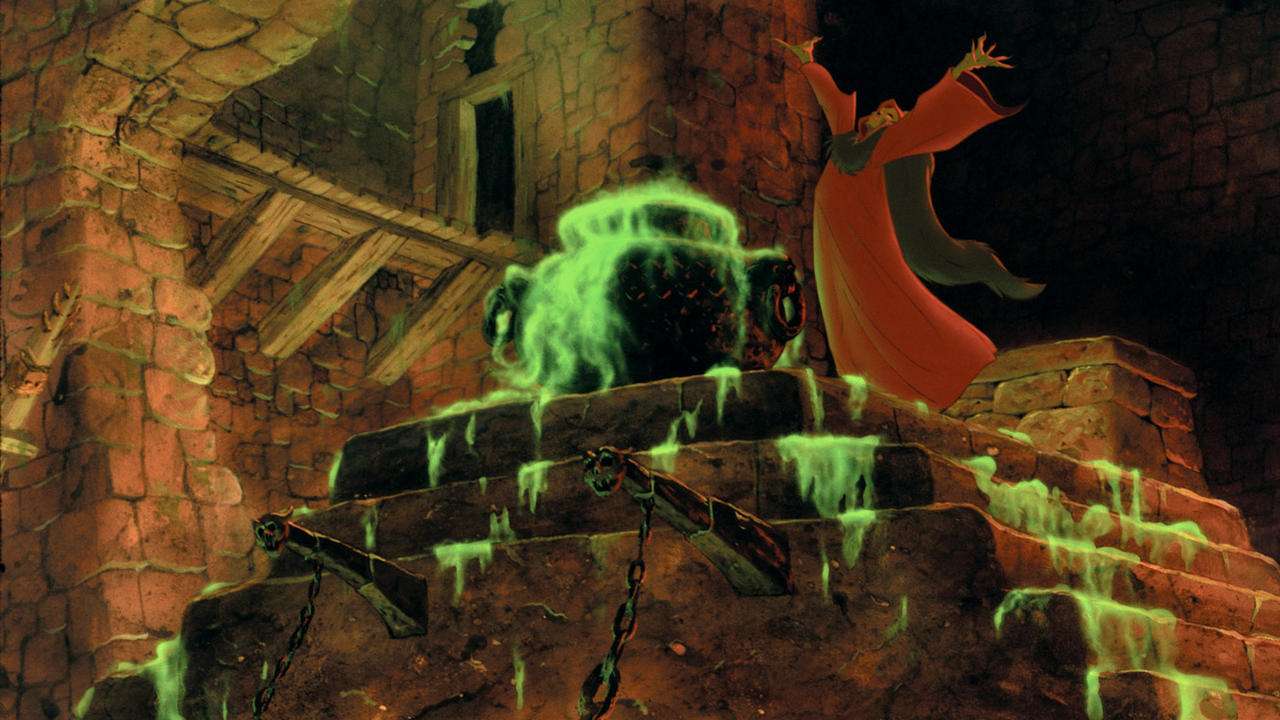
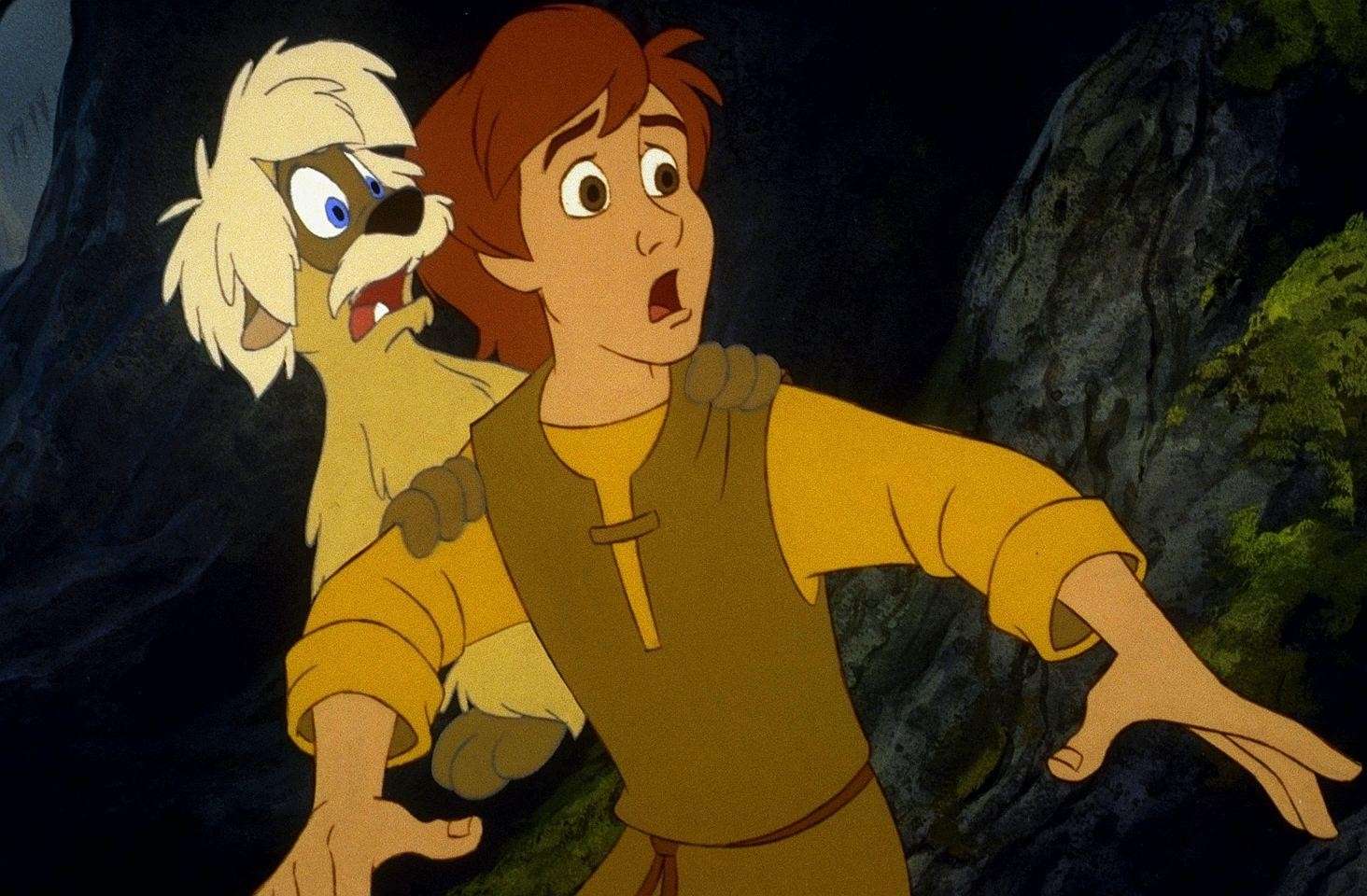

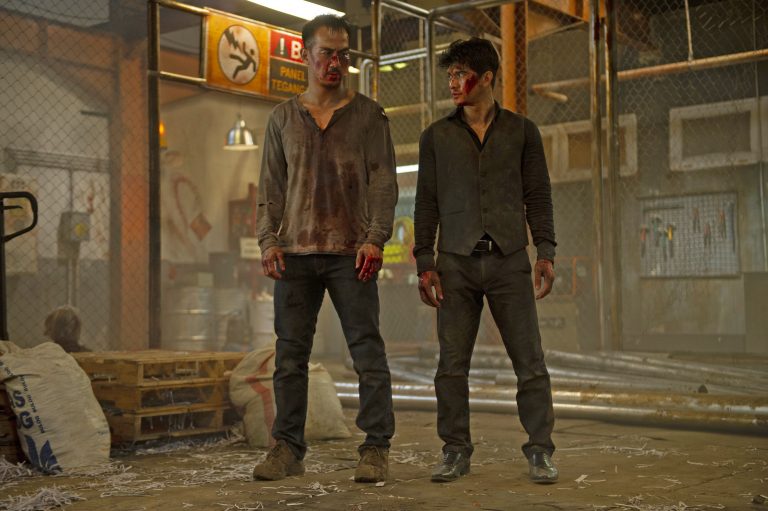
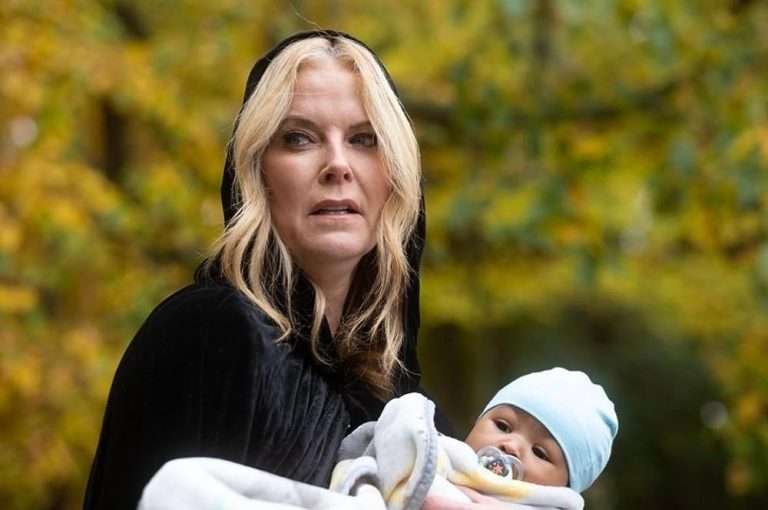
![Fantastic Beasts: The Crimes of Grindelwald [2018] Review – Weakest Wizarding World Chapter Yet](https://79468c92.delivery.rocketcdn.me/wp-content/uploads/2018/11/FANTASTIC_BEASTS_HOF-768x432.jpg)
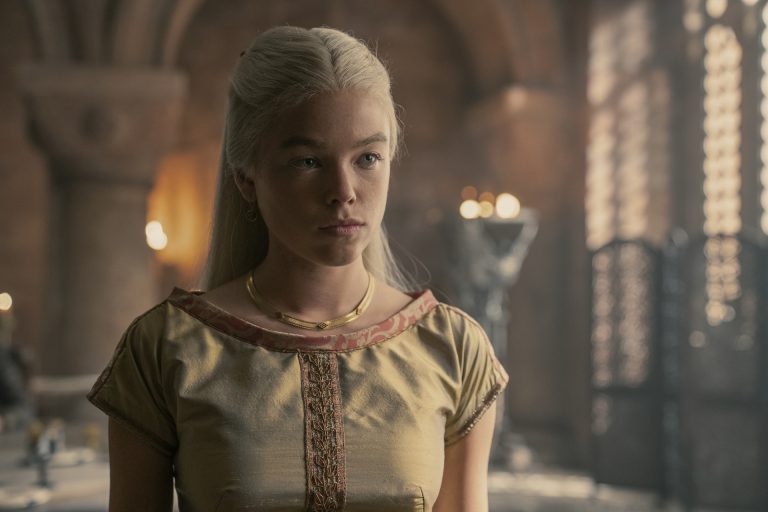
![Maya and The Three [2021] Netflix Review: One Of The Best Animated Shows Of All Time](https://79468c92.delivery.rocketcdn.me/wp-content/uploads/2021/10/Maya-and-the-Three_LimitedSeries_Episode2_00_04_23_15-768x325.jpg)
